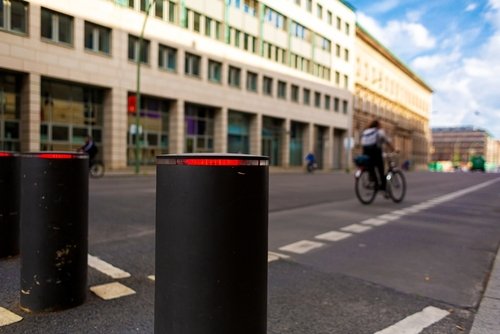Greece (Brussels Morning newspaper) In the development of cities, the need arose to upgrade the ground with durable materials to ensure safer and more efficient movement for citizens. Today, the design and functionality of public spaces, including sidewalks, are of paramount importance in modern societies.
Sidewalks, pavements, and roads within cities are considered public spaces, and it is crucial that they serve the needs of all individuals, including those with disabilities, particularly those with visual impairments such as complete blindness, limited visibility, or color perception issues. To facilitate their safe navigation, governments have implemented specialized routes called “Guides for the Blind,” characterized by brightly colored tiles and textured surfaces.
These distinctive tiles, differentiated from the regular pavement, are prominently colored in shades of yellow or red to catch the attention of both sighted individuals and those with vision challenges. Similar to the Braille system used for reading and writing, visually impaired individuals rely on the tactile information provided by these specialized tiles. By using their canes to interact with the textured surface, they can identify obstacles, receive warnings, and perceive changes in direction. The concept of tactile pavements was pioneered by Seiichi Miyake, a Japanese engineer who created raised-patterned bricks in 1965 to assist his friend experiencing vision problems.
The tiles used for the guides for the blind are categorized into three types, each serving a specific navigational purpose. Type A plates, featuring wide and thin stripes, guide visually impaired individuals along their intended path. Type B plates, adorned with bright yellow scales, serve as warning signs at road entry points, placed 80 cm wide to alert pedestrians. At points of vertical course changes, three plates are positioned perpendicular to the path, providing additional warnings. Type C plates, with denser and less pronounced scales, indicate changes in direction along the route of the Type A tiles.
These specialized tiles function as a universal code, familiar to all citizens, fostering a harmonious coexistence on sidewalks. However, in practice, achieving this symbiosis poses challenges. The root of the problem lies in the inadequate provision of sidewalk sizes by the state, which fails to accommodate both regular pedestrian flow and the specialized lanes for the blind. The guidelines stipulate that the guide for the blind should be implemented on sidewalks with a minimum width of 2.80 meters and on all commercial street sidewalks, regardless of their width. This leads to issues for both visually impaired individuals and other pedestrians. Given that many sidewalks struggle to accommodate a single pedestrian, accommodating such specialized lanes becomes increasingly difficult.
Similar challenges arise when trees or other structures obstruct sidewalks, rendering pedestrian access nearly impossible. Broken or worn tiles pose navigation difficulties and pose safety hazards. These situations impose various restrictions on comfortable sidewalk movement. Some individuals choose to walk on the tactile strip, while others constantly try to avoid it due to concerns about slipperiness caused by the striped relief.
Moreover, when sidewalks are borderline in their dimensions, traffic tension and congestion can occur. Pedestrians end up walking in a single file, creating continuous lines of moving people. Comfortable access to sidewalks and public spaces is crucial for the mental well-being of modern citizens. From an architectural perspective, the variation in color and texture of public floors creates visually appealing patterns throughout the city, enhancing its character, unity, and coexistence among all residents.
However, due to the selective placement of these tiles, they can unintentionally create a sense of exclusion, as they seem to guide only “normal” individuals to specific areas of the city. This restriction can be perceived as discriminatory toward people with visual impairments. In a society that values equality and justice, it is imperative to provide all citizens, without exception, with the undeniable right to convenient, comfortable, and unobstructed access to all parts of the city.
The article was prepared in coordination with Prof. George Rimenidis, Department of Architecture, University of Ioannina, Greece.




